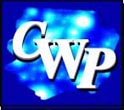Some Important Contributions:
First paper to discuss how
the strong, weak, and electromagnetic coupling constant
can merge to a single coupling constant in a grand
unified theory, with Howard Georgi and Steven Weinberg.
Suggested a possible near symmetry of the universe
(now known as Peccei- Quinn symmetry) to explain
how strong interactions can maintain the symmetry
between particles and antiparticles (CP symmetry)
when weak interactions do not, with Roberto Peccei.
Showed how physics of quarks can be used to predict
some properties of the physics of hadrons (which are
particles made from quarks),with Enrico Poggio and Steven Weinberg.
This is now known as quark-hadron
duality.
Phenomenological analyses of CP violation in B meson decays in the
standard model with the Kobayashi-Maskawa mass matrix.
Some Important Publications:
"Divergence Cancellations in a Simplified Weak Interaction Model,"
Physics Letters 39B: 229 (1972), with T. Appelquist.
"Hierarchy of Interactions in Unified Gauge Theories,"
Physical Review Letters 33: 451 (1974), with H. Georgi and S. Weinberg.
"Smearing Method in the Quark Model,"
Physical Review D13: 1958 (1976), with E. C. Poggio and S. Weinberg.
"CP Conservation in the Presence of Pseudoparticles,"
Physical Review Letters 38: 1440 (1977), with R. D. Peccei.
and
"Constraints Imposed by CP Conservation in the Presence of a Pseudoparticle," Physical Review D16: 1791 (1977), with R. D. Peccei.
"CP Violation in B Physics," Annual Review of Nuclear and Particle Science 42: 211 (1992), with Y. Nir.
Honors
Fellow, American Physical Society
Fellow, Alfred Sloan Foundation 1974-78
Fellow, American Academy of Arts and Sciences
2000 Dirac Medal with Howard Georgi and Jogesh Pati
for pioneering contributions to the
quest for a unified theory of quarks and leptons and of the strong, weak, and electromagnetic interactions.
Jobs/Positions
1967-70 Postdoctoral Fellow,
Deutsches Elektronen Synchrotron
Hamburg, Germany
1971-72 Postdoctoral Fellow, Harvard University
1972-76 Assistant Professor, Harvard University
1976-77 Associate Professor,
Harvard University
1977-78 Visiting Associate Professor,
Stanford University
1978-79 Senior Postdoctoral Fellow, Stanford Linear Accelerator Center,
Stanford University
1979 - Staff Scientist, Stanford Linear Accelerator Center,
Stanford University
1988 - Education and Public Outreach Manager,
Stanford Linear Accelerator Center,
Stanford University
Education
B.S. Stanford University 1963
M.S. Stanford University 1964
Ph.D. Stanford University 1967
Elementary and High School:
Tintern Church of England Girls Grammar School,
Ringwood East, Victoria, Australia.
Began undergraduate studies at the University of Melbourne, Australia before transfering to Stanford University.
Helen R. Quinn, [amw1992].
Additional Information/Comments
Married Daniel Quinn in 1966.
Two children:
Elizabeth Helen Quinn (1971) and
James Arnold Quinn (1974).
Additional Professional Interest: Education
On-going education of teachers for science teaching.
President of non-profit Contemporary Physic
Education Project (http://pdg.lbl.gov/cpep.html), which
produces material on contemporary topics for high
school and college use.
Recreation Interests:
Native plants, especially flowers and grasses;
hiking and jogging.
Submitted by:
Helen R. Quinn / Martha Keyes
<quinn@slac.stanford.edu/secwp@physics.ucla.edu>
Original citer's name:
Nina Byers
<byers@physics.ucla.edu>
|  Welcome
to CWP at UCLA
Welcome
to CWP at UCLA  Welcome
to CWP at UCLA
Welcome
to CWP at UCLA